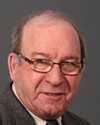Thank you for your question.
Our membership is the same; it's eight members of the board and the chairman. All of our appointments are made through the Minister of Indian Affairs. We have no direct appointments from the Government of Nunavut.
We at present are sitting at seven members. We have as recently as last year lost quorum. Our enabling legislation allows us to create panels. We're the only institution of the government that has that ability to create sub-panels, and we've created panels of three members. That has worked well. It was a contingency measure that we implemented two years ago.
We've actually seen brought to bear on that initiative situations in which we've almost not had quorum of a panel, have had difficulty even getting a panel together. So our short-term contingency has now turned into a long-term regular operating practice.





